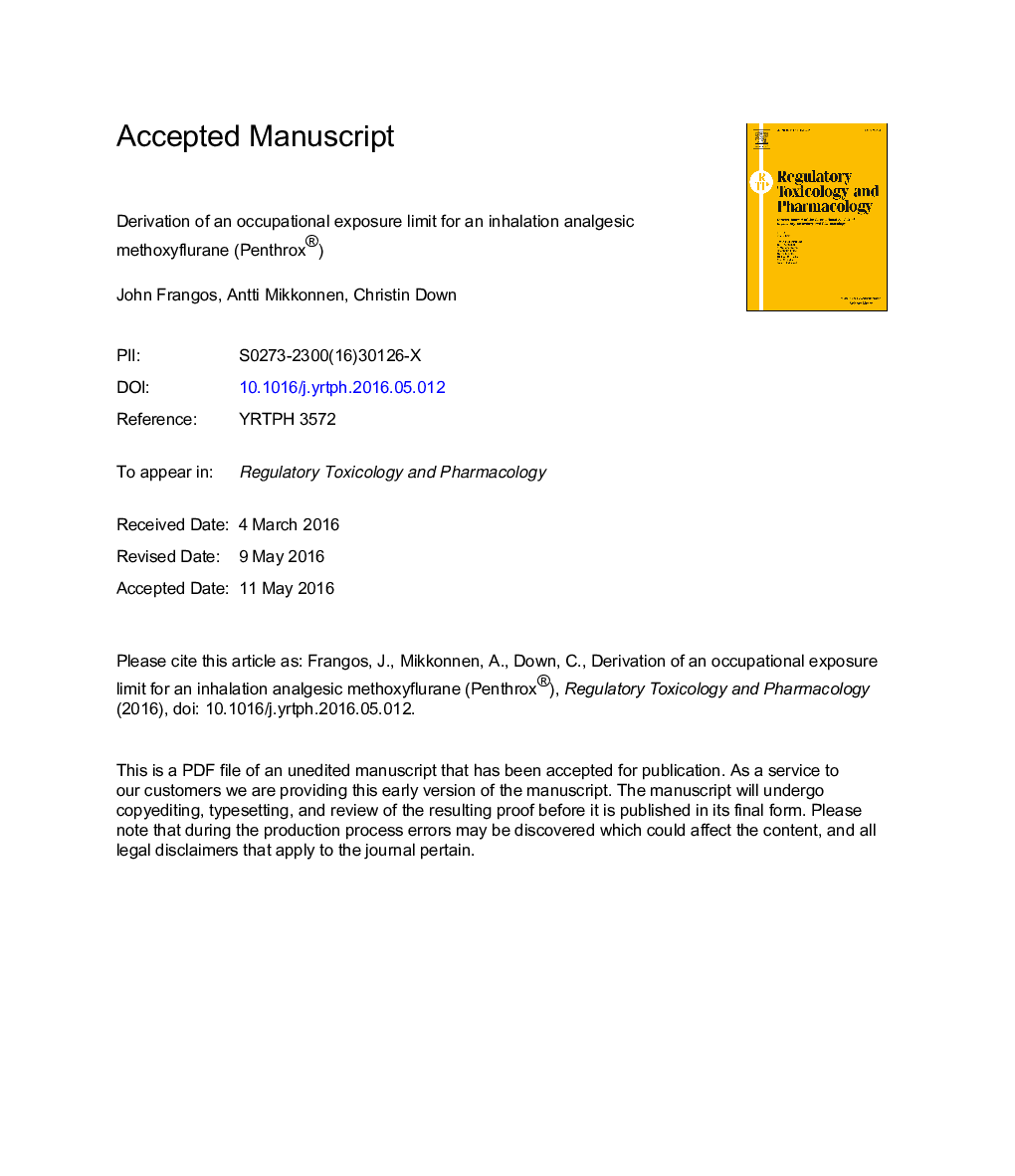| کد مقاله | کد نشریه | سال انتشار | مقاله انگلیسی | نسخه تمام متن |
|---|---|---|---|---|
| 5855897 | 1562123 | 2016 | 49 صفحه PDF | دانلود رایگان |
عنوان انگلیسی مقاله ISI
Derivation of an occupational exposure limit for an inhalation analgesic methoxyflurane (Penthrox®)
دانلود مقاله + سفارش ترجمه
دانلود مقاله ISI انگلیسی
رایگان برای ایرانیان
کلمات کلیدی
موضوعات مرتبط
علوم زیستی و بیوفناوری
علوم محیط زیست
بهداشت، سم شناسی و جهش زایی
پیش نمایش صفحه اول مقاله

چکیده انگلیسی
Methoxyflurane (MOF) a haloether, is an inhalation analgesic agent for emergency relief of pain by self administration in conscious patients with trauma and associated pain. It is administered under supervision of personnel trained in its use. As a consequence of supervised use, intermittent occupational exposure can occur. An occupational exposure limit has not been established for methoxyflurane. Human clinical and toxicity data have been reviewed and used to derive an occupational exposure limit (referred to as a maximum exposure level, MEL) according to modern principles. The data set for methoxyflurane is complex given its historical use as anaesthetic. Distinguishing clinical investigations of adverse health effects following high and prolonged exposure during anaesthesia to assess relatively low and intermittent exposure during occupational exposure requires an evidence based approach to the toxicity assessment and determination of a critical effect and point of departure. The principal target organs are the kidney and the central nervous system and there have been rare reports of hepatotoxicity, too. Methoxyflurane is not genotoxic based on in vitro bacterial mutation and in vivo micronucleus tests and it is not classifiable (IARC) as a carcinogenic hazard to humans. The critical effect chosen for development of a MEL is kidney toxicity. The point of departure (POD) was derived from the concentration response relationship for kidney toxicity using the benchmark dose method. A MEL of 15 ppm (expressed as an 8 h time weighted average (TWA)) was derived. The derived MEL is at least 50 times higher than the mean observed TWA (0.23 ppm) for ambulance workers and medical staff involved in supervising use of Penthrox. In typical treatment environments (ambulances and treatment rooms) that meet ventilation requirements the derived MEL is at least 10 times higher than the modelled TWA (1.5 ppm or less) and the estimated short term peak concentrations are within the MEL. The odour threshold for MOF of 0.13-0.19 ppm indicates that the odour is detectable well below the MEL. Given the above considerations the proposed MEL is health protective.
ناشر
Database: Elsevier - ScienceDirect (ساینس دایرکت)
Journal: Regulatory Toxicology and Pharmacology - Volume 80, October 2016, Pages 210-225
Journal: Regulatory Toxicology and Pharmacology - Volume 80, October 2016, Pages 210-225
نویسندگان
John Frangos, Antti Mikkonen, Christin Down,